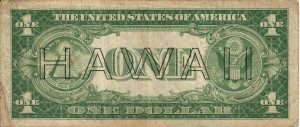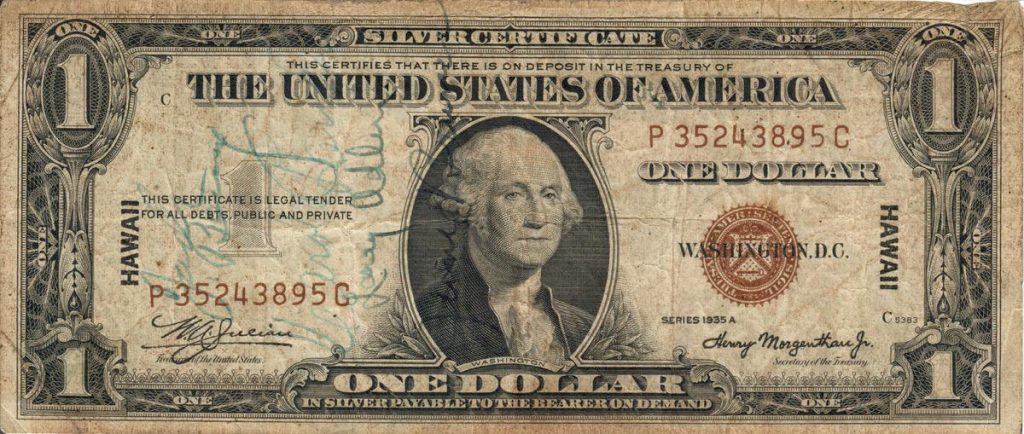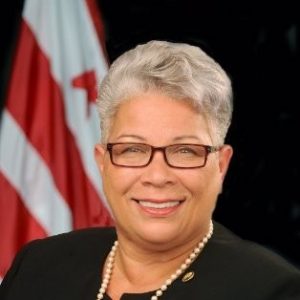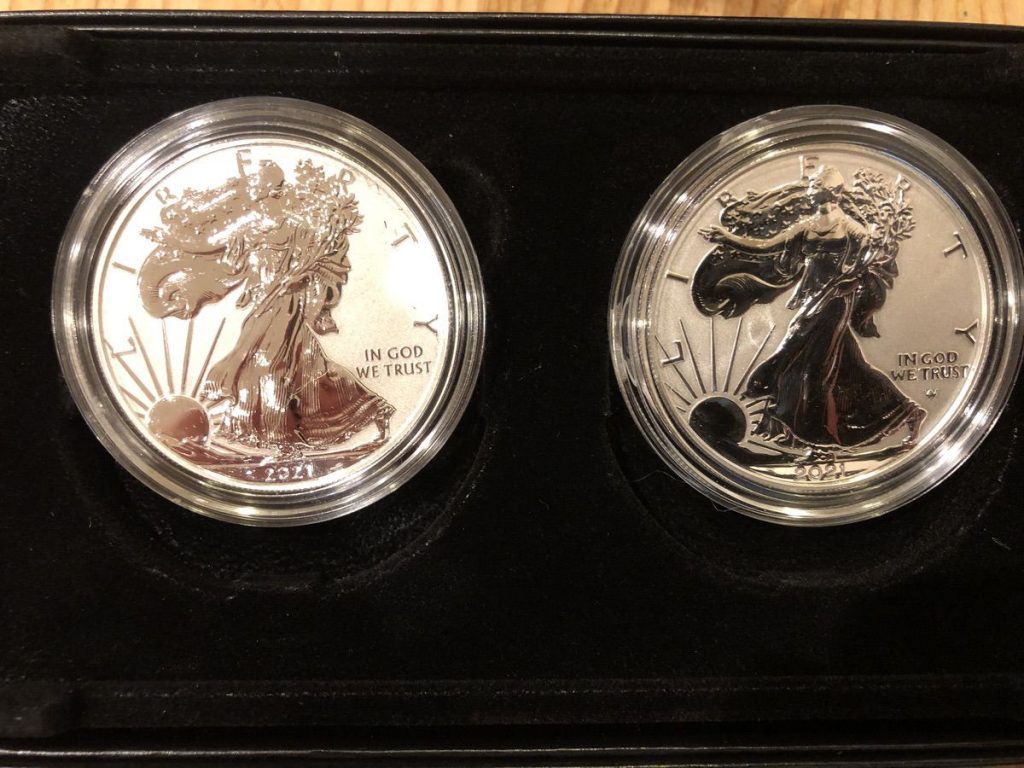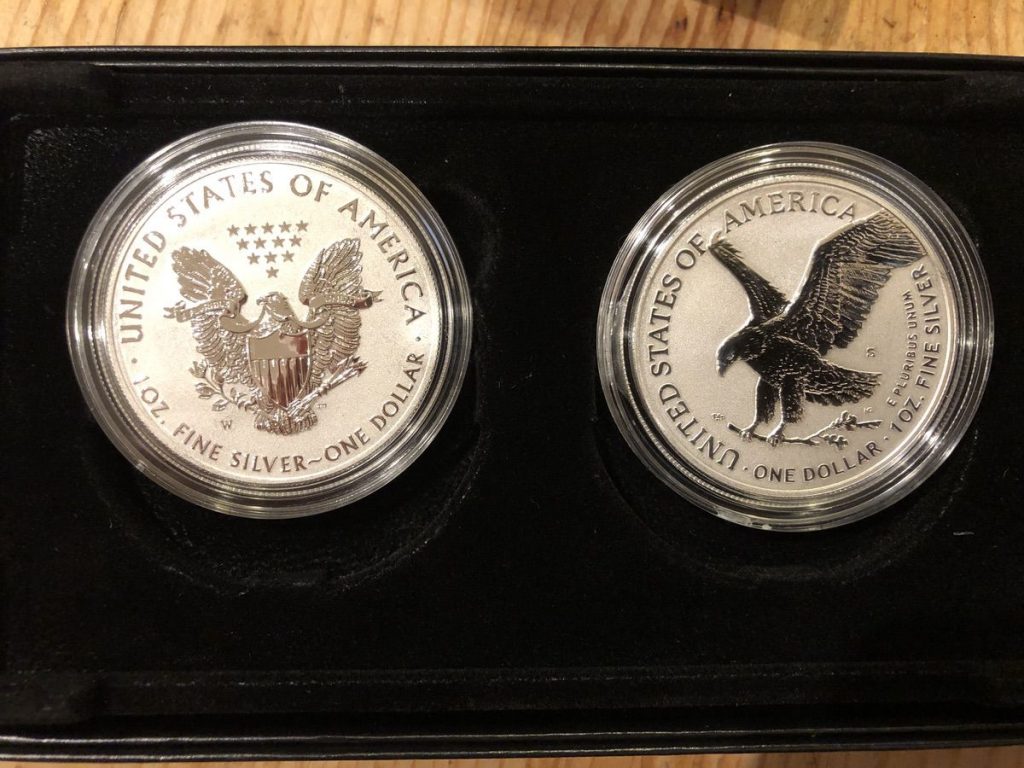Things That Make You Go Hmm…
Life can be confusing. One of those confusions is when people do something for reasons that are not obvious. Then when the people were asked why they did not offer any answers.
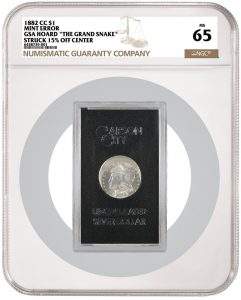
1882-CC GSA “Grand Snake Morgan Dollar Struck 15% Off Center graded NGC MS 65 (Image courtesy of NGC)
The coin is fascinating in that it looks stunning, survived for so long to be part of the GSA Hoard, and the original owner purchased the coin for $30 in 1972. But that is not what makes this coin a curiosity.
Rather than NGC applying the tamper-evident label that NGC wraps around the GSA holder, NGC placed the entire GSA holder in one of their Mega Holders.
According to NGC’s website, the Mega Holder can hold a coin as large as 180 mm (about 7-inches) in diameter and 28 mm (about 1.1-inches) thick. The NGC holder appears to be three times the size of the GSA holder.
Understandably, a collector would send a coin of this significance to NGC for authentication and grading. But why did NGC have to slab the entire GSA holder? The coin is 38.1 mm in diameter (less than 1-inch) and is in a holder for a coin seven times its size. The coin, which should be the central focus, appears lost.
I tried to ask NGC about their decision to slab the entire GSA holder, and the response I received referred me back to the article that does not discuss the decision. There must be a reason other than “this is what the client wanted.” Even if NGC does not want to answer the question, I want to see the coin in person.
Nothing wrong with the Mint’s Manufacturing Process
The U.S. Mint took to social media to let everyone know that they struck 24 million coins since January 2020.
After COVID-19 shut down the world, the supply chain was interrupted and not moving as expected. As businesses began to open, regulators ordered the U.S. Mint to increase circulating coin production so the Federal Reserve could push coins through the economy.
In 2020, the U.S. Mint struck 14.774 billion coins, 23.7-percent more than they struck in 2019. The announcement means that in the first ten months of 2021, the U.S. Mint struck 10 billion additional coins. It appears that the U.S. Mint will match the production rate of 2020.
Although collectors have a lot to say about how they have been treated, the U.S. Mint exceeds its primary mission as the nation’s coin manufacturer.
Two Collectibles In One
A short snorter is a banknote signed by people meeting or traveling together. Although the practice is said to have started in 1925 by Alaskan bush pilots, it became popular during World War II. Soldiers would have a banknote, usually a $1 bill, and have people they meet sign the note. Some soldiers used local currencies to remember where they met the people who signed the notes.
Short snorters are interesting. There is a story behind every note. Even if you do not know who the signatures belong to, it is interesting to think about their stories. If that is not enough, to have a short snorter on a Hawaii overprint note makes it very interesting.
Following the attack on Pearl Harbor, the Treasury and the Federal Reserve issued notes with HAWAII on the front and overprinted on the back. The notes were issued so that if Japan invaded Hawaii, the government could remove their legal tender status, making them worthless.
Treasury issued the $1 silver certificate in June 1942. Later, the Federal Reserve issued $5, $10, and $20 Federal Reserve Notes. By August 1942, there were enough notes that the military ordered residents to exchange old currency for the new Hawaii overprint notes.
The U.S. government recalled Hawaii overprint notes in April 1946. Locals continued to use them for a few years since they retained their legal tender status. Some notes survived as souvenirs.
The note I purchased from LKCA has four signatures that have faded with time. The handwriting is not legible, making it challenging to make out the names. Who were these guys?
Since the notes were first issued in 1942, withdrawn in 1946, and VJ Day is August 15, 1945, it gives us the period and location for this meeting. Unless someone can read the handwriting, that is all we know.
Was this the souvenir of a last drink by four soldiers before being discharged after the war? Maybe it was their last meeting before a battle or after surviving whatever the Japanese tried to throw at them. Or was it an acknowledgment of friendship?
The note was likely found by a relative of a deceased World War II veteran who put it back in collector circulation. Its story passed along with that veteran. On its current stop in the collecting continuum, I am honored to hold a piece of their heroic history.
Treasury Appoints a new Acting Director of the US Mint
Gibson, a Navy veteran, previously served as the Director of Human Resources for Washington, DC’s Department of Human Resources. Previously, Gibson was Deputy Chief Human Capital Officer at the Department of Health and Human Services (HHS) and held similar positions at the National Labor Relations Board (NLRB).
Gibson is a member of the federal government’s Senior Executive Service (SES). She is a federal employee, and the Acting Director does not require congressional approval. The law allows a person in an acting role to serve for a maximum of 180 days.
Treasury was quick to note that Gibson is the first African American person to lead the bureau. Deputy Secretary Wally Adeyemo said, “Her historic appointment reflects our ongoing commitment to building a qualified, diverse workforce at Treasury and its bureaus that will serve the American people well.”
Is Gibson really qualified for this position? The U.S. Mint is the world’s largest manufacturer of coins. The U.S. Mint reports that they have manufactured over 11.2 BILLION coins in 2021. Although Gibson has extensive government experience, she does not have any experience manufacturing or producing a product.
Gibson has extensive experience with human resources, but the U.S. Mint not only has a diverse workforce but a constituency that watches everything the bureau does. HHS and NLRB do not have a constituency like the U.S. Mint. The collecting community is very critical as to how this bureau does its job. While the law governs what the U.S. Mint can do, the areas where they have latitude, the decisions are more diverse than human resources.
Does having a human resources background make Gibson qualified in collector relations? An HR professional may be able to talk with collectors, but does she understand the market? The last two directors had numismatic experience before their appointments.
Does having a human resources background make Gibson qualified to manage an e-commerce service? The numismatic media has documented the failures of the U.S. Mint’s e-commerce system. Fixing the system requires leadership and the ability to understand what the technical people are saying. As a former government contractor, I watched as SES and appointees did not properly question rosy contractor reports only to watch as the contractors could not deliver results. The U.S. Mint’s contractor has not delivered. What assurances do we have that Gibson can understand when the contractor is lying?
There is nothing wrong with human resource professionals but are they qualified to run a government manufacturer with an opinionated customer base? I guess we shall see.
Weekly World Numismatic News for October 24, 2021
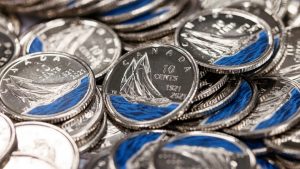
2021 Canada circulating 10-cent coin featuring a splash of color honoring the 100th Anniversary of the Bluenose (Royal Canadian Mint image)
This week, the Royal Canadian Mint announced that they would issue a colored 10 cent coin to celebrate the 100th anniversary of the Bluenose. The Bluenose was a famous fishing schooner launched from Nova Scotia in 1921. Canadians nicknamed the vessel The Queen of the North Atlantic. An image of the Bluenose began its depiction on the Canadian 10-cent coin in 1937.
The dual-dated coin will include a splash of blue on the design that represents the water. The Royal Mint and Bank of Canada have begun circulating the coin this week.
The new 10-cent coin is not the first circulating colorized coin. In 2004, the Royal Canadian Mint produced a 25-cent coin with a red poppy to honor Canadian veterans. In 2006, they produced a 25-cent coin with a pink ribbon in support of Breast Cancer research.
Canadians do not have the same hangups about what constitutes a coin as their U.S. neighbors. Regular contacts report that Canadians welcome the new coins excitement. Many suspect people will pick the coins out of circulation as soon as they enter, similar to the red poppy and breast cancer awareness 25-cent coins.
Imagine the reaction if the U.S. Mint produced a colorized circulating coin?
And now the news…
 → Read more at heritagedaily.com
→ Read more at heritagedaily.com
 → Read more at cherokeephoenix.org
→ Read more at cherokeephoenix.org
 → Read more at standard.co.uk
→ Read more at standard.co.uk
 → Read more at miningweekly.com
→ Read more at miningweekly.com
 → Read more at uk.news.yahoo.com
→ Read more at uk.news.yahoo.com
 → Read more at orissadiary.com
→ Read more at orissadiary.com
 → Read more at heritagedaily.com
→ Read more at heritagedaily.com
 → Read more at smh.com.au
→ Read more at smh.com.au
 → Read more at ottawa.ctvnews.ca
→ Read more at ottawa.ctvnews.ca
Keeping my ASE Proof Collection Complete
With everything that is going on, coin collecting is still a fun hobby, and there are a lot of coins to collect. I am proudest of my almost complete collection of proof American Silver Eagle coins.
From 1986 to 2019, my father bought two proof American Silver Eagle coins. One was for his collection, and the other was mine. When the U.S. Mint issued special sets, I would purchase one for myself and attempt to purchase one for my father. I was able to purchase the 25th Anniversary Set for myself but could never buy one for my father. On the secondary market, too many sets were broken up and graded, ruining the grandeur of the five-coin set.
I am missing the 1995-W American Silver Eagle.
Although there have been problems with the U.S. Mint’s e-commerce site, I have been able to keep up with my American Silver Eagle collection. Recently, the U.S. Mint shipped the American Silver Eagle Reverse Proof Two-Coin Set. My set arrived before I left town for the weekend.
Like many collectors, I love the look of reverse-proof coins. The shiny devices make the design stand out. When I show the coins to non-collectors, the coins make an impression.
What does not make an impression is the package.
For a set that costs $175, the package feels cheap. The insert is cheap plastic that holds onto the coin so tight that the coin is difficult to remove. The box is thinner cardboard, and it is not in a clamshell box, like other sets. The package appears as if the U.S. Mint modified it from a copper-nickel clad proof coin.
The U.S. Mint might think that the package does not matter. There will be collectors that will take the coins out of the package and send them to a third-party grading service. This attitude does not consider those who prefer to keep the coins in the original government package (OGP).
My entire collection of American Silver Eagle proof coins is in its OGP. The 2021 set looks like an afterthought next to the 2013 West Point and 2012 San Francisco two-coin sets.
At least the coins are gorgeous!
